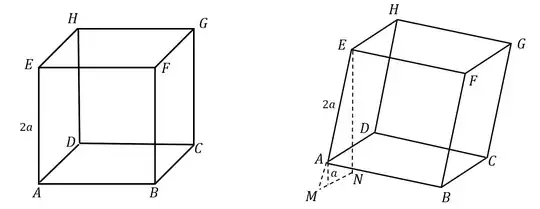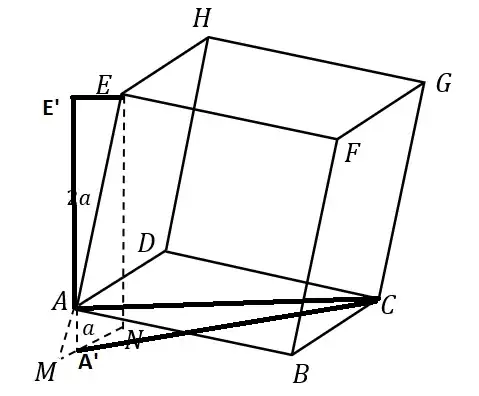A cube $ABCD.EFGH$ has side length $2a$ cm. Point $A$ is lifted $a$ cm from the floor, point $C$ is still on the floor, point $B$ and point $D$ are on the same height from the floor. What is the height of point $E$ from the floor?
I'm sorry for my bad English, but I try to illustrate it as follows.

The left cube is the original one while the right side is the cube after we lifted the point $A$. In my mind, to find the height of point $E$ from the floor is to find the length of line $EN$. We can use Pythagorean theorem $EN^2=ME^2-MN^2$. But how to find the length of line $ME$ and $MN$?
